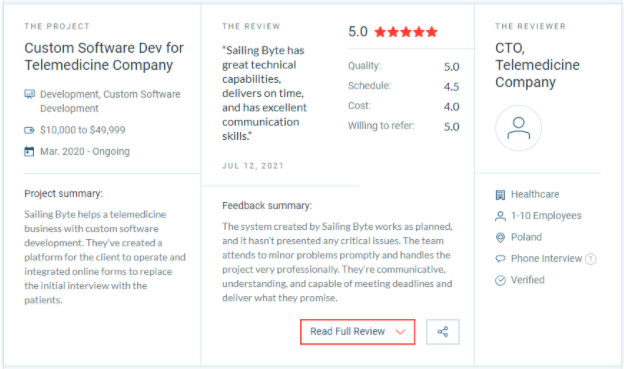What is the key to a successful business? If your answer is 'a good idea', you are only partly correct. Not in thinking that a good idea is meaningless but in thinking it is the most important. You can argue by giving examples of all groundbreaking companies of the past centuries. Undoubtedly, Facebook or Netflix are great ideas, but they would be nothing without some proper steps their founders took at the beginning of their long road. The truth is, there is not one factor that can guarantee success, and a good idea is merely… a 5 % of the whole. Let's see what a future businessman needs to consider before starting a business.
Is your idea truly good?
A good idea is the core of your product. But remember, your business must be useful to people. It is in the definition of a product- something that was manufactured and is for sale. Because people need it, they are willing to buy it. Talking about the ideas, it is always good to look within your area of interest. For example, creating a brand-new graphic design program might not be the best choice for someone who has only been building websites their whole life. Knowing your product is the best you can start with before you assess whether people would like to buy it.
Conduct a thorough research
This step includes analyzing the market before starting your business. Your analysis must take into consideration multiple factors, such as:
- Target customers - who they are, their needs, age, locations, financial statuses, and marital statuses.
- Getting to know your customers - ask them questions. The perfect places to do so are social media. The more customers tell you about them and the product they need, the better.
- Competitors - who they are, what they offer, what flaws their products have. This will help you compare your product to the ones already on the market and identify existing weaknesses. Also, pay attention to the prices and how much customers spend on similar products.
Create a business plan
A business plan takes into consideration your business goals, the current and future ones. It helps to choose the direction of the business at every stage of its development. It will also help strategically in making important decisions. You can create a business plan alone or hire a professional to do it for you. Regardless of what option you choose, the plan should contain several key features:
- Title page and contents – it is essential they are well-organized, look neat, and professional. Your business plan will be shown to possible investors, and you want to impress them.
- Statement of purpose – a summary of your product along with business operations. It should state whether you are looking for funding or not.
- Product/service description – describe what you are offering, how your product benefits the customers, and possibly how it differs from the products already on the market.
- Market analysis – show your target customers' expectations and selling trends.
- Competitor analysis – the weaknesses and strengths of your competitors' products
Get funding
A good business plan also pays attention to the initial cost of setting up your startup. No business has ever started with no money, but not having your funds does not mean you cannot start one. Except for the obvious sources of funds, like friends and family loans which you have probably tried already, there are others that you can try to gain using your business plan. These include:
- bank loans
- grants, local funding
- venture capital - financing that investors provide to startup companies and small businesses with long-term growth potential
- angel investors - private investors funding in exchange for equity
Plan your marketing strategy
Even the best product will not be a success if people do not buy it. To buy it, they need to know about its existence. That is why your marketing needs to be as effective as possible. While planning your marketing strategy, it is essential to cover such areas as:
- Logo and visual identity – ideally, you want to present your business plan with these two already established. Otherwise, this is the last call for the creation of your logo and your visual identity. You will need it to implement your marketing strategy on all other channels.
- Company website – a home to your business. Nowadays, most activities are done online, including shopping. If you do not exist on the Internet, you do not exist at all.
- Social media – the website is where you sell your products or services, but social media is where you advertise. It is equally important to your business to cover all the most important channels (such as Facebook, Instagram, Twitter, TikTok, etc.) as it is to have a working website.
- CRM (Customer Relationship Management) – this includes building an email marketing contact list and implementing a well-conducted email marketing campaign. Choose appropriate CRM software to help you store your customer data. Remember that consent to send commercial emails is obligatory by law. Apart from that, requesting your clients' permission to send marketing material is a good practice. It builds trust to let the clients decide whether they opt-in or not.
All the above-mentioned need to be frequently updated with relevant content, not only regarding the products but also the company, business, or industry news. A strong online presence is a key to your product success. Without it, even the most fantastic product will not thrive. Subsequently, following a good marketing plan is as important as providing a good quality product or service.
Create a Minimum Viable Product (MVP)
MVP should have enough features to attract your first customers who will constitute your test group. They will provide feedback, thanks to which you can quickly improve the underdeveloped parts of your app or system. Remember, the MVP does not have to be perfect. It needs to be operational. Its primary purpose is to test whether the idea attracts customers in the long run. It also minimizes the time and resources you devote to building a product that might not attract any customers in due course.
Update your product based on customer feedback
Gathering feedback can be done in countless ways. Several are listed below:
- In-app surveys – ask about the satisfaction with the product, how easy it is to use it, or whether clients will recommend it to friends.
- Interviewing or focus groups – contacting customers using the contact information they provided. This is a more time-consuming way of collecting data, but it gives more in-depth knowledge about your customers.
- A/B testing – campaigns which purpose is to test different versions of your system on your customers to choose the most suitable one
- Landing page monitoring – monitoring the activity on the landing page describing your product. If the potential customers are interested, they will click on tabs such as 'more about the product' or 'pricing.'
Once you have all the information, implement the changes to your product, and do not forget to keep the customers updated. It shows your engagement and invites them to interact. This is important because getting feedback and updating the MVP is a constant process influencing your product strategy and the development processes in Agile.
Control your finances
Every small business has two types of costs – fixed costs and variable costs. Fixed costs do not change with the amount of the product you sell, whereas variable costs do.
For most businesses, fixed costs include rent, utility bills, insurance, loan repayments, but also domain payments, payment gateway, or any subscription costs.
Variable business costs include production materials and supplies, commissions, credit card fees, etc. The more you produce, the more variable costs you will incur.
For example, if you do not sell any of your products, it does not mean that you will not incur any costs. Similarly, your variable costs will likely increase if you sell many product units. A simple balance sheet will help you assess your costs and all calculations. Try answering some basic questions, like:
- How much does the production of one unit of your product costs? – it gives you the idea of a minimum price of a unit of your product that covers its production
- How many products must you sell monthly to cover fixed costs? – this many products sold will not bring you any income
As you grow, you will have to keep an eye on the costs, and you may need to find ways to cut some of them to fund your future development. The key is to not do it at the expense of the quality of the product you offer.
Grow your business
As you progress, the natural phase of every business development is growth. A working product generates a rapid sales increase, and you start seeing profits. In further stages, you will consider hiring more people, renting bigger spaces, and buying more advanced equipment and technology. You will start looking at other development directions. After reading this article, I hope all of these come sooner rather than later.






